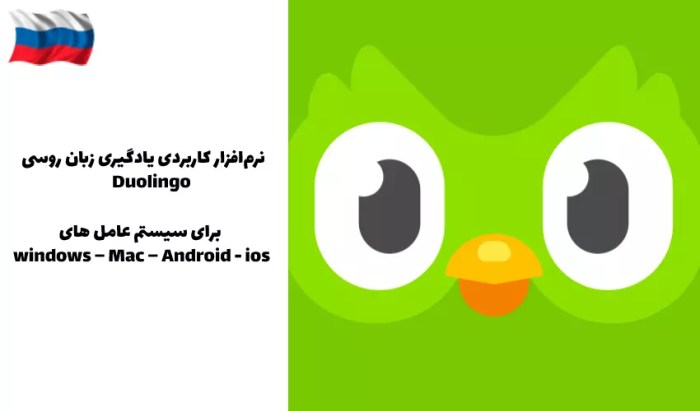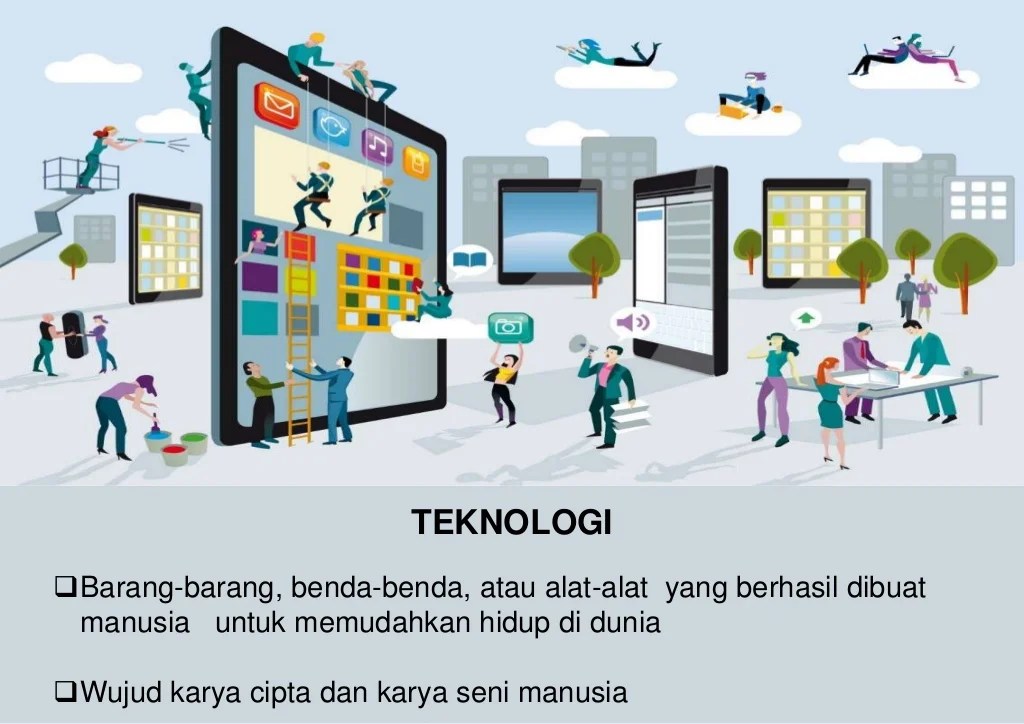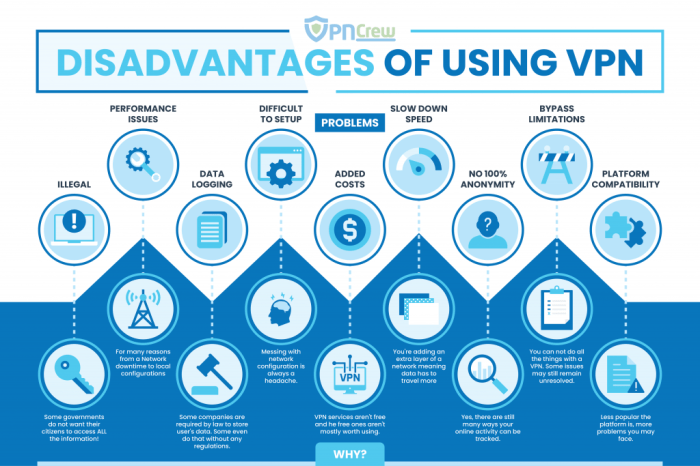Pemanfaatan Teknologi Pembelajaran Interactive Language App Bahasa Rusia

“Pemanfaatan Teknologi Pembelajaran Interactive Language App dalam Pembelajaran Bahasa Rusia” – Yo, what’s up, language learners? Learning Russian can feel like climbing Mount Everest, right? But guess what? Interactive language apps are like getting a Sherpa – they make the climb way easier and way more fun! These apps are totally changing the game, offering a super chill way to master vocab, grammar, and even pronunciation.
Forget boring textbooks – we’re talking interactive exercises, personalized learning plans, and even voice recognition to help you nail that perfect Russian accent. Let’s dive into how these awesome apps can totally level up your Russian skills.
Artikel ini akan membahas secara mendalam bagaimana aplikasi pembelajaran bahasa interaktif dapat merevolusi cara kita belajar bahasa Rusia. Kita akan mengeksplorasi berbagai aplikasi populer, fitur-fitur unggulannya, serta strategi efektif untuk memanfaatkannya secara maksimal. Kita juga akan melihat bagaimana aplikasi ini dapat diintegrasikan dengan metode pembelajaran tradisional untuk hasil belajar yang optimal.
Siap untuk upgrade kemampuan bahasa Rusia kamu?
Pengenalan Aplikasi Bahasa Interaktif untuk Pembelajaran Bahasa Rusia: “Pemanfaatan Teknologi Pembelajaran Interactive Language App Dalam Pembelajaran Bahasa Rusia”

Belajar bahasa Rusia, bro? Forget dusty textbooks and boring grammar drills! The world of interactive language apps is here to save the day, making learning Russian way more fun and, dare I say, -lit*! These apps use super-cool tech to personalize your learning experience, turning a potentially grueling task into something you actually -want* to do.
Think gamified lessons, AI-powered feedback, and a whole lotta digital awesomeness.
Berbagai Jenis Aplikasi Pembelajaran Bahasa Interaktif untuk Bahasa Rusia
There’s a whole spectrum of apps out there, each with its own vibe and features. Some focus on vocabulary building, others on grammar, and some even incorporate cultural elements. You’ll find apps that use flashcards, games, voice recognition, and even real-life conversations with native speakers.
It’s like a buffet of learning styles – find the one that best suits your taste!
Fitur Utama Aplikasi Pembelajaran Bahasa Rusia
Most killer language apps share some common features designed to make learning a breeze. Think of it as a cheat code for language acquisition. These features are seriously game-changing.
- Personalized Learning Paths:Apps adapt to your pace and learning style, focusing on areas where you need the most help. No more struggling with stuff you already know!
- Interactive Exercises:Forget rote memorization! These apps use quizzes, games, and other engaging activities to help you learn and retain information.
- Speech Recognition:Practice your pronunciation with voice recognition technology that provides instant feedback on your accent. Level up your Russian game!
- Vocabulary Building Tools:Flashcards, spaced repetition systems, and other tools help you build a solid vocabulary base. Expand your Russian vocab like a boss!
- Grammar Explanations:Clear and concise explanations of Russian grammar rules, often with helpful examples. Conquer those grammar demons!
Perbandingan Aplikasi Pembelajaran Bahasa Rusia, “Pemanfaatan Teknologi Pembelajaran Interactive Language App dalam Pembelajaran Bahasa Rusia”
Choosing the right app can be tough, so here’s a quick comparison of three popular options. Remember, the best app for you will depend on your learning style and budget.
| Nama Aplikasi | Fitur Utama | Harga | Rating Pengguna (Contoh) |
|---|---|---|---|
| Duolingo | Gamified lessons, vocabulary building, grammar exercises, speech recognition | Gratis (dengan opsi berbayar) | 4.5 bintang |
| Memrise | Flashcards, spaced repetition, mnemonics, community features | Gratis (dengan opsi berbayar) | 4.2 bintang |
| Babbel | Structured courses, interactive dialogues, personalized learning paths | Berbayar | 4.6 bintang |
Perbedaan Aplikasi Pembelajaran Bahasa Interaktif dengan Metode Pembelajaran Tradisional
Let’s be real, traditional methods – think textbooks and classroom lectures – can be, well, -kinda* boring. Interactive apps offer a totally different approach. Think of it as the difference between a rad video game and a dusty old encyclopedia.
- Engagement:Apps use gamification and interactive exercises to keep you hooked, unlike the monotony of traditional methods.
- Personalization:Apps adapt to your individual needs and learning style, offering a customized learning experience.
- Accessibility:Learn anytime, anywhere, at your own pace. No more rigid schedules or classroom constraints!
- Immediate Feedback:Get instant feedback on your progress, helping you identify and correct mistakes quickly.
- Multimedia Content:Apps often incorporate audio, video, and images, making learning more engaging and memorable.
Ilustrasi Perbedaan Antarmuka Pengguna
Imagine this: On one side, you have a vibrant, colorful app interface with engaging graphics, interactive exercises, and clear progress indicators. It’s dynamic, responsive, and packed with multimedia elements. Think of a sleek, modern dashboard with all the tools you need at your fingertips.
On the other side, you see a traditional textbook – static pages filled with dense text, grammar rules, and vocabulary lists. It’s less engaging and requires more self-discipline. The app is like a high-tech spaceship, while the textbook is a trusty but somewhat clunky old car.
Integrasi Aplikasi dengan Metode Pembelajaran Lain
Yo, peeps! Learning Russian can be a total blast, but sometimes it’s like, “Ugh, so much work!” That’s where interactive language apps come in – they’re like the ultimate study buddy. But, to really -level up* your Russian skills, you gotta know how to blend these apps with other learning methods.
Think of it as a power-up combo in your language-learning quest!
This section breaks down how to integrate interactive language apps with other Russian learning methods like face-to-face courses or private tutoring, highlighting the pros and cons, and providing practical steps for effective integration. We’ll also look at some real-world scenarios and a table summarizing different learning methods and how the app can enhance them.
Get ready to become a Russian-speaking ninja!
Keuntungan dan Kerugian Integrasi Aplikasi dengan Metode Pembelajaran Lain
Integrating interactive language apps with other learning methods isn’t just about adding more stuff to your to-do list; it’s about strategic synergy. Think of it like this: your in-person classes are the core workout, while the app is your supplementary training – hitting those different muscle groups for a well-rounded learning experience.
- Keuntungan:Apps offer personalized practice, immediate feedback, and convenient access anytime, anywhere. This supplements classroom learning, reinforcing what you’ve learned and addressing areas where you might need extra help. It’s like having a personal tutor available 24/7. Imagine mastering those tricky verb conjugations on your commute!
- Kerugian:Over-reliance on apps can lead to a lack of interaction with real people and a less nuanced understanding of the language. It’s crucial to balance app usage with other methods that foster communication skills and cultural understanding. Think of it as needing a balance between solo practice and team play to truly master the game.
Langkah-langkah Praktis Menggabungkan Aplikasi dengan Metode Pembelajaran Lain
So, how do you actually -do* this integration thing? It’s not rocket science, but a little planning goes a long way. Here’s the lowdown:
- Identify your learning goals:What are you trying to achieve? Improved vocabulary? Better grammar? More fluent conversation? Knowing your goals helps you choose the right app features and integrate them with your other learning methods.
- Choose the right app:Not all apps are created equal. Find one that aligns with your learning style and goals. Consider factors like lesson structure, interactive exercises, and community features.
- Schedule dedicated app time:Treat your app practice like any other study session. Schedule regular time to use the app and stick to your schedule. Consistency is key!
- Integrate with classroom learning:Use the app to review material covered in class, practice specific skills, or explore topics that interest you further. It’s like having extra homework that’s actually fun.
- Seek feedback:Don’t be afraid to ask your teacher or tutor for feedback on your app usage and how it’s impacting your learning. They can offer valuable insights and adjustments.
Contoh Skenario Pembelajaran yang Menggabungkan Aplikasi dengan Metode Konvensional
Let’s say you’re taking a beginner’s Russian course. During class, you learn basic greetings and introductions. After class, you use your interactive language app to practice these greetings through interactive exercises and speech recognition. Then, you use the app’s vocabulary builder to learn new words related to introductions, preparing you for the next class.
This approach combines structured learning with personalized practice and reinforcement.
Another example: You’re working with a tutor focusing on Russian grammar. After your tutoring session, you use the app to complete grammar exercises and quizzes, strengthening your understanding of the concepts discussed. The app provides instant feedback, highlighting areas where you need further review.
Tabel Perbandingan Metode Pembelajaran dan Integrasi Aplikasi
| Metode Pembelajaran | Keunggulan Metode | Kekurangan Metode | Integrasi Aplikasi |
|---|---|---|---|
| Kursus Tatap Muka | Interaksi langsung, umpan balik dari guru, pembelajaran terstruktur | Waktu terbatas, kurang fleksibel, mungkin mahal | Aplikasi dapat digunakan untuk memperkuat materi, latihan tambahan, dan pembelajaran mandiri. |
| Bimbingan Privat | Pembelajaran yang dipersonalisasi, fleksibel, fokus pada kebutuhan individu | Mahal, ketersediaan tutor yang terbatas | Aplikasi dapat digunakan untuk melengkapi sesi bimbingan, menyediakan latihan tambahan, dan melacak kemajuan. |
| Pembelajaran Mandiri (Buku Teks) | Terjangkau, fleksibel, kontrol atas kecepatan belajar | Kurang interaksi, sulit mendapatkan umpan balik, mungkin membosankan | Aplikasi dapat memberikan latihan interaktif, umpan balik instan, dan motivasi tambahan. |
| Immersion (Tinggal di negara berbahasa Rusia) | Pengalaman belajar yang mendalam, peningkatan kemampuan berbahasa yang cepat | Mahal, membutuhkan komitmen waktu yang besar, mungkin menantang | Aplikasi dapat digunakan untuk mempelajari kosakata dan tata bahasa baru, dan untuk berlatih percakapan sebelum interaksi langsung. |
Penutupan

So, there you have it, peeps! Mastering Russian doesn’t have to be a total drag. With the help of interactive language apps, you can totally transform your learning experience. It’s all about finding the right app for you, staying consistent, and making the most of those awesome features.
Remember, it’s a journey, not a race. Embrace the process, have fun with it, and before you know it, you’ll be speaking fluent Russian like a total pro. Da svidaniya, and happy learning!
Pertanyaan Umum (FAQ)
Apakah aplikasi ini cocok untuk semua level kemampuan?
Ya, banyak aplikasi menawarkan berbagai level, dari pemula hingga mahir.
Berapa biaya yang dibutuhkan untuk menggunakan aplikasi ini?
Ada aplikasi gratis dan berbayar, dengan fitur yang bervariasi.
Bagaimana cara memilih aplikasi yang tepat?
Pertimbangkan fitur, ulasan pengguna, dan level kemampuan Anda.
Apakah aplikasi ini dapat menggantikan guru bahasa Rusia?
Tidak, aplikasi merupakan pelengkap, bukan pengganti guru.



